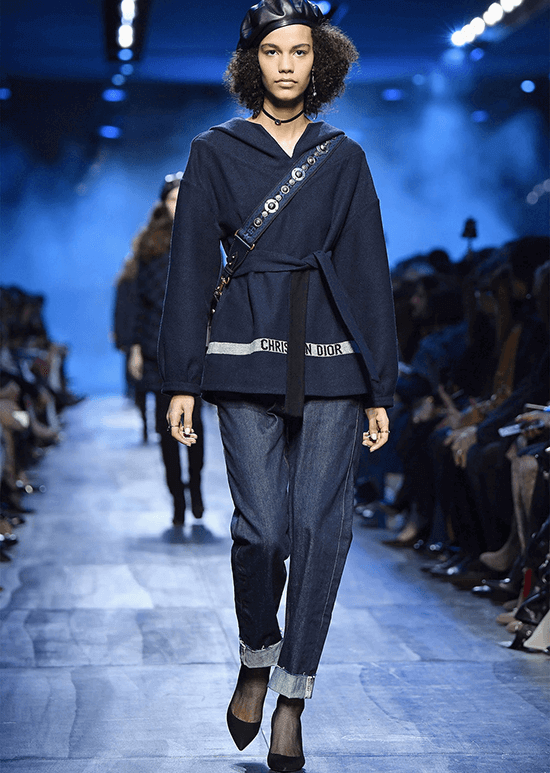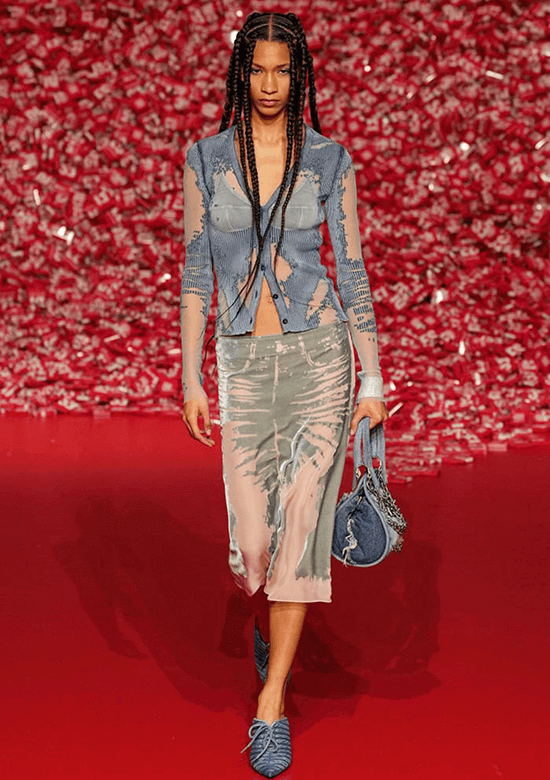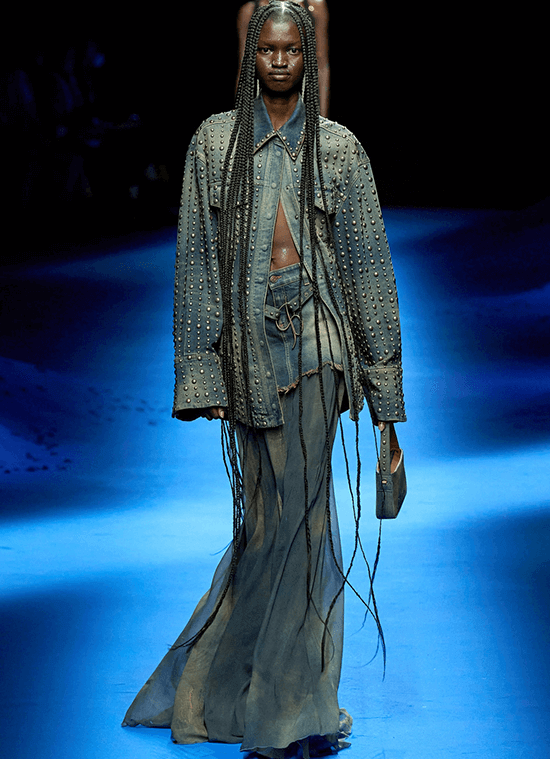The hardworking and enduring style of denim
The recent fall-winter 2023-2024 runway show of Diesel in Milan was received with such unexpected delight that the brand known for jeans has become the new darling of fashion watchers.
Denim is taken for granted because it is a utilitarian wardrobe staple but Glenn Martens, Diesel’s creative director, has taken it to never-before-imagined iterations that now makes it more current than ever, especially after the pandemic when practicality and sustainability have become buzzwords. But part of sustainability is artistry and beauty, which is essential for mental health and is food for the soul. And Martens delivered that while innovatively pushing the boundaries of technology—with devoré denim slithering over the body as portions fade into sheer translucency to create a kind of edgy lace, distressed tops washed to look like beat-up leather but having the liquidity of jersey, mini dresses with a finish of crackled, gleaming metal, and coats bonded with deadstock shearling erupting through rips and tears.
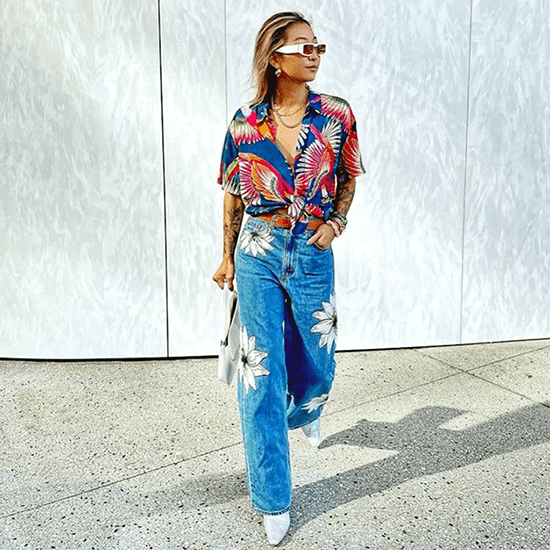
Denim has indeed come a long way from its 19th-century workwear beginnings when Levi Strauss, a German immigrant, moved from New York to San Francisco during the “gold rush” to start a branch of his family’s dry goods business, which included denim, a twill cotton weave using one colored thread and one white one. During an unsuccessful replication attempt of a cotton fabric known as “jeane” (named after the city of Genoa, Italy), the weavers of Nîmes in France realized they had developed a sturdy twill with the weft passing under the warp threads. Indigo was used to dye the warp threads blue on one side, leaving the weft threads white on the other. It was called “Serges (twill) de Nīmes” which would eventually evolve into “denim.”
Originally manufactured in India during the Greco-Roman era, the organic indigo dye was extracted from the Indigofera tinctoria plant, a rare commodity that incurred heavy tax duties from Persian, Levantine and Greek exporters, making it a rare luxury in Europe until Vasco de Gama discovered a sea route to India in 1497 after which it became more affordable.
The German chemist Adolf von Baeyer’s synthesis of natural indigo in 1883 paved the way for the mass production of synthetic indigo in 1897, making it cheaper and with a longer-lasting color that offered permanence and durability.

Strauss’ denim was used by a tailor named Jacob W. Davis, who produced items like tents and wagon covers and eventually trousers commissioned by a gold mining company. His use of metal rivets to make workwear more durable made them more popular and led to a partnership with Strauss in 1873. Overalls were manufactured in the 1870s and the first pair of jeans in the 1890s. Denim became the preferred workwear for western cowboys, miners, railroad workers and farmers in the 20th century.
World War II gave blue jeans another chapter, declared as an essential commodity and sold only to defense and military workers. By the end of the war, with a shortage of materials to produce them, they became more closely linked to leisure wear.

In the 1950s, movie stars like Marilyn Monroe gave jeans an empowering and sexualized image, while Marlon Brando and James Dean redefined them in highly stylized roles in the cult movies The Wild Oneand Rebel Without a Cause, jumpstarting the youth rebellion culture from the 1950s to the 1960s when students wore them in protesting against the establishment.

Women who began to embrace sexual liberation would wear jeans to express this, in bolder styles with slimmer waists and wider bell-bottoms that gained popularity in the 1970s, spreading to Europe and the rest of the world. In the Philippines, it became popular with the youth and the protest movement.
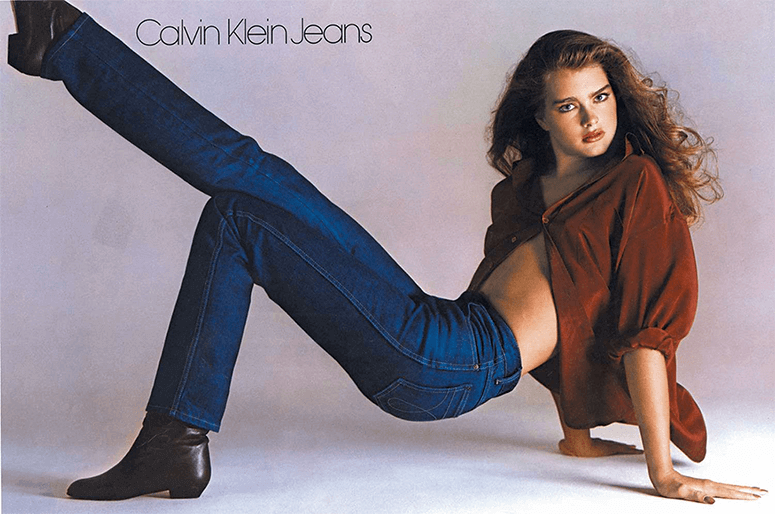
The 1980s saw the rise of designer denim, with brands like Calvin Klein and Armani launching jeans for the first time, ushering the age of premium denim and the skinny fit that was so tight you needed to lay down in order to zip them up.
In the 1990s, baggy jeans emerged, as well as high-waisted “Mom jeans” and wide-legged “JNCO style.”
In the 2000s ultra-low-rise jeans were seen on the likes of Destiny’s Child and Britney Spears. Flares and bootcut styles also trended and premium denim soared with brands like 7 for all Mankind and Citizens of Humanity.
In the 2010s, with innovations in denim stretch technology, skinny jeans became the go-to style.
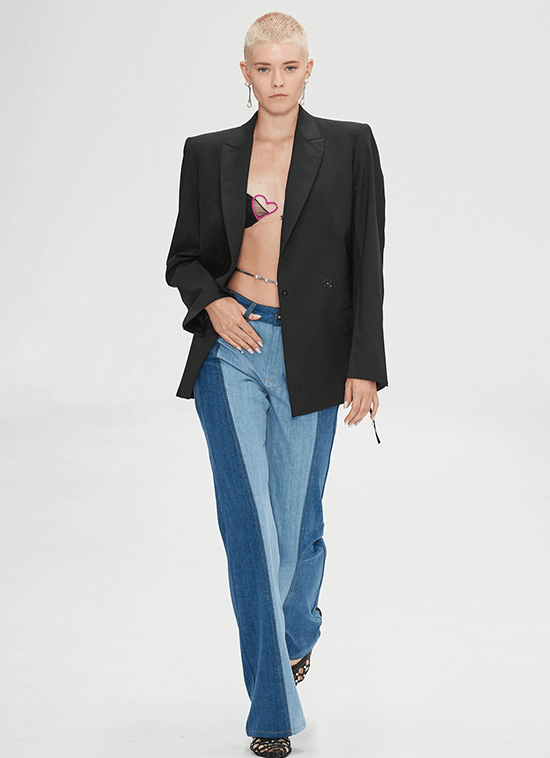
Denim fashion today is now heading towards variety and based more on individual expression and style. On the spring 2023 runways, the denim maxi skirt last seen in the boho era was reinvented with slick polish at Alaïa and Burberry and elevated at Altuzarra. Slouchy, extra-baggy and extra-comfortable styles, like at Jacquemus and Kaite, are de rigeur with the style set.
Y2K makeovers had distressed, low-slung, sandwashed, printed and studded versions, seen at Nensi Dojaka, Blumarine and Marine Serre. Denim dresses came in washed out maxis at KNWLS, off-the shoulder and red carpet-ready at Alaīa, and in versatile minis at Carolina Herrera.
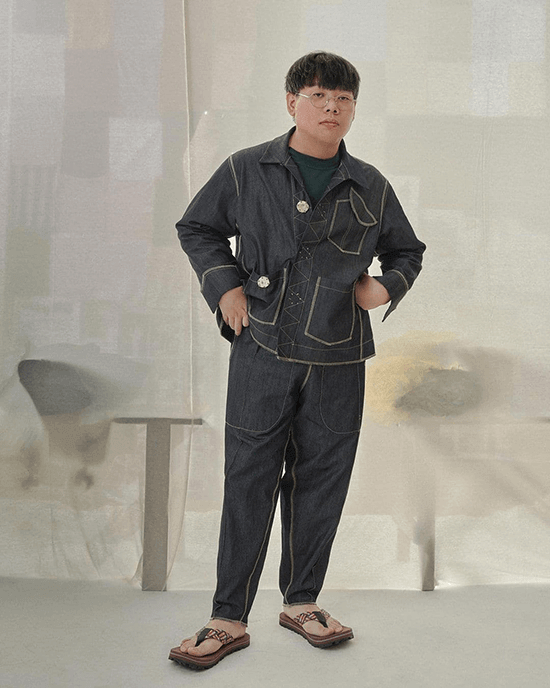
Filipino designer Carl Jan Cruz, a cult favorite known for his hand-stitched pieces of “deceivingly simple details,” has a “Maong” line and recently did a collab with Univers. Denim has proven to be such a perennial mainstay with endless possibilities that Yves Saint Laurent’s quote in 1983 comes to mind: “I have often said that I wish I invented blue jeans. They have expression, modesty, sex appeal, simplicity—all that I hope for in my clothes.”



